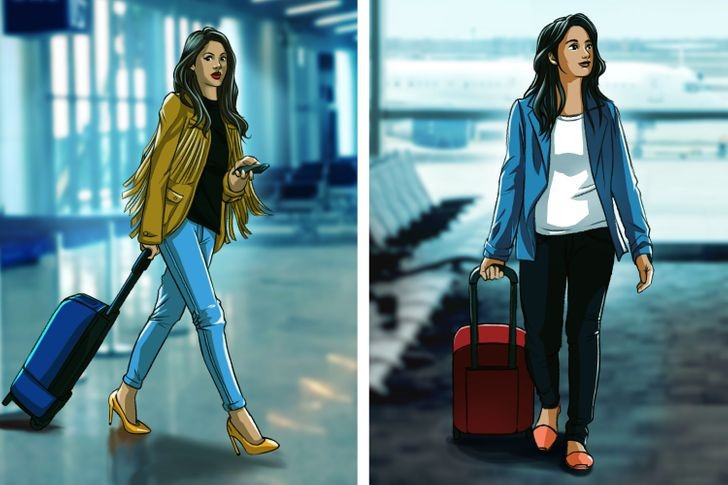Holiday travel can be exciting, and many opt for air travel as their preferred mode of transportation. However, not everyone is aware of the safety protocols to follow when flying. Here are 5 ‘golden rules’ that pilots have vouched for, which everyone should follow to ensure their safety and that of others on the flight:

Always wear shoes when using the restroom
Stefán Dór Arnarsson, a pilot with an Icelandic airline, advises: “Many passengers take off their shoes while seated to be comfortable during the flight. But remember to always wear shoes when using the restroom.”
The restroom floors on airplanes can be wet or have fallen items, so wearing shoes provides better safety. Moreover, in case of an emergency, you’ll be better equipped to move quickly, according to Nypost.
Michelle Gooris, a pilot and blogger at Dutch Pilot Girl, says: “I never go barefoot when using the restroom. It’s just gross.”
Never stand up before the plane comes to a complete stop
Loitering in the aisle while the plane is still taxiing can be risky. Pilot Michelle Gooris shares: “I keep my seatbelt fastened and would never stand in the aisle when the plane hasn’t stopped yet. This may sound simple, but many passengers insist on standing up even before the plane has stopped.”
Unfastening your seatbelt while the plane is still moving and the fasten seatbelt sign is on is dangerous and illegal.
Even when the plane has landed but hasn’t stopped completely, the pilot may have to brake suddenly to give way to unexpected crossing traffic.

Don’t panic during turbulence
You may hear announcements from the flight crew about entering turbulent air, but there’s no need to panic. Airplanes are designed and built to withstand even the most turbulent conditions.
Pilot Jeanie Carter from the private airline Wheels Up, explains: “Turbulence can be uncomfortable for most people, but it’s highly unlikely for a plane to crash or fall out of the sky because of it. Instead of panicking, follow the flight crew’s instructions. Stay seated and buckle up when asked to do so.”
Don’t stuff the overhead bins with your luggage
Avoid bringing too much carry-on luggage when flying. If everyone brings two bags to store in the overhead bins, it will quickly become overcrowded, leaving no space for those who board later.
Jeanie Carter shares: “I always put my backpack under the seat in front of me. If all passengers did this small thing, it would make a huge difference.”
Open the window shades when requested
In an emergency, if the pilot asks you to open the window shades, comply with this request. Don’t hesitate, as this small action could help save your life in an emergency.
Pilot Mindy Lindheim says: “I never close the window shades during takeoff or landing. This not only provides a beautiful view for passengers, but they can also spot any abnormalities and bring them to the crew’s attention.”

Former flight attendant reveals little-known ‘threat’ on planes

Flight attendant reveals surprising truth about coffee on planes

Flight attendant reveals clothes you should avoid wearing on a plane
1. Arrive early: It is recommended to arrive at the airport at least 2 hours before the scheduled departure time to ensure a smooth check-in and boarding process, avoiding last-minute rushes and potential delays.
2. Pay attention during the safety briefing: The safety demonstration provided by the cabin crew contains vital information on emergency procedures and the location of essential equipment. Understanding these procedures can make a significant difference in an unexpected situation.
3. Keep your seatbelt fastened: Turbulence can occur unexpectedly, and it is crucial to keep your seatbelt fastened whenever seated. This simple precaution can prevent injuries and ensure a safer flight for everyone on board.
4. Follow crew instructions: The pilots and cabin crew are highly trained professionals who prioritize your safety. Following their instructions, such as remaining seated during certain phases of flight or refraining from using electronic devices, is crucial for a safe journey.
5. Be mindful of your surroundings: Pay attention to the exit rows and count the number of seats to your nearest exit. In an emergency, a quick exit may be necessary, and having a sense of your surroundings can save precious time.

































